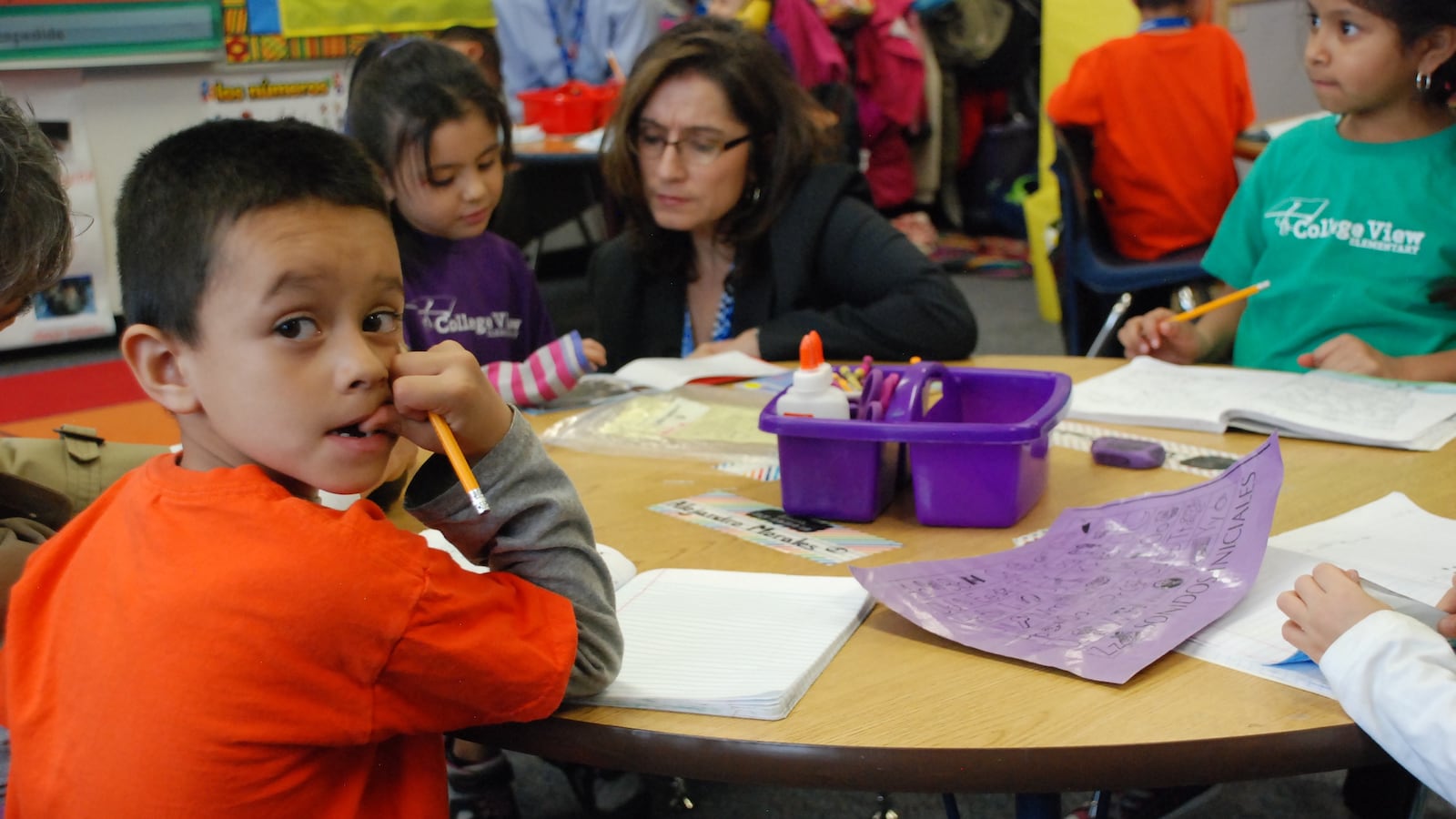On a warm summer morning last week, about 40 new Denver Public Schools teachers sat in semicircles in a high-ceilinged classroom at North High School.
“One of the fears I had is calling the homes of people whose languages I don’t speak,” one teacher told the group.
Another teacher, who will be teaching at a school where the rigorous International Baccalaureate program and the traditional classes have long been criticized for being racially divided, said he’s concerned about having to mediate conflicts between IB students and non-IB students.
“It’s almost like two schools in one,” he said. “I’m worried about how to deal with a racially charged conflict in the hallway or something.”
The conversation came during a three-hour course on culturally responsive teaching, where teachers were asked to share fears about working with students and families from different backgrounds. This is the first year DPS is requiring all new teachers to take the previously optional course — a move experts say puts Colorado’s largest school district ahead of the curve in addressing a critical topic.
The mandate is partly a response to the demographic reality of DPS: While 78 percent of students last year were children of color, 74 percent of teachers were white.
And those numbers are unlikely to change much this school year, which gets underway this month. Seventy percent of the 935 new teachers hired as of Aug. 1 are white.
“Given that so many of our teachers don’t come from the experiences of our kids, we’ve become more and more clear about saying, ‘This is not something we can let be random,’” said Debbie Hearty, DPS’s chief human resources officer.
The current national discourse on race “is a really important reminder that this is not a nice-to-have,” she said. “This is a need-to-have.”
So what is culturally responsive teaching? The definition can vary, but experts agree it entails building relationships with students — learning about their lives, meeting their families — to better understand the strengths they bring to the classroom. It includes having high expectations for all students, regardless of race or class, experts said, and planning lessons with students’ cultural backgrounds in mind.
“Teachers grab on to, ‘I’m going to integrate some diverse material into my curriculum,’ and that’s just one component,” said Dorinda Carter Andrews, the assistant dean for equity outreach initiatives and an associate education professor at Michigan State University.
To do it right, Carter Andrews and others said, teachers must first examine their own biases and how those biases might affect their students. For instance, is a teacher more likely to believe a white student who said he forgot his homework at home than a black student?
Retired university professor Christine Sleeter has researched culturally responsive teaching and surveyed teachers about it. Most said they understood the concept, but when Sleeter asked how they interpreted the difficulties some of their students were having, “They used deficit perspectives about kids and families: ‘The kids don’t care about education. They don’t come to school.’”
“If you’re really working with culturally responsive pedagogy, you don’t frame kids and families in terms of deficits,” Sleeter said. Instead, she said, teachers should think about the barriers that schools may be unintentionally presenting to those families.
Experts agree that Denver is ahead of most other school districts nationwide when it comes to mandating culturally responsive teaching training for teachers, even if it’s just for new teachers. But they worry a three-hour course doesn’t do the subject justice.
“You can’t unlearn your biases in three hours,” Carter Andrews said. “It’s a step in the right direction, but we have to move to that continual year-long professional development.”
Denver does offer more in-depth training to interested teachers throughout the school year and an advanced course for those who’ve taken the first series and want to go deeper, officials said. The district also offers bias training to all categories of employees, including school leaders, facility managers, bus drivers, and campus security guards.
The three-hour course is meant to give new teachers an introduction to the topic, said Danielle Harris, the district’s manager of culturally responsive education. At the end, the teachers were given a survey asking whether they’d like ongoing training.
“We used it as a snapshot so that if they want to continue this journey, they have that avenue,” Harris said. “So far, the responses have been positive.”
The three-hour introduction was integrated into DPS’s New Educator Institute, a weeklong series of welcome events and training sessions held in early August.
The morning session hosted in the high-ceilinged classroom at North High was led by Bill de la Cruz, the district’s director of equity and inclusion. He guided the teachers through a series of discussions and exercises about their jobs as educators, their identities as individuals and the intersection of the two.
He also offered the teachers some practical advice:
Learn how to pronounce your students’ names correctly. If you don’t know how, ask them.
If a child tells you he doesn’t have his homework, don’t jump to the conclusion that he’s unmotivated or defiant. Ask him why. You might find out that it has more to do with trauma at home than his unwillingness to complete his work.
Invite each student to hang a poster or a piece of artwork on the classroom walls as a way to showcase who they are to you and their peers.
And most of all, if you see a harmful bias at play in your school — for instance, teachers more harshly disciplining students of color than white students — speak up about it.
“You have a fresh set of eyes and you might see something that someone who’s been here for a while has gotten used to,” de la Cruz told the new teachers. “And I don’t want you to get used to things that are negatively impacting our kids.”

